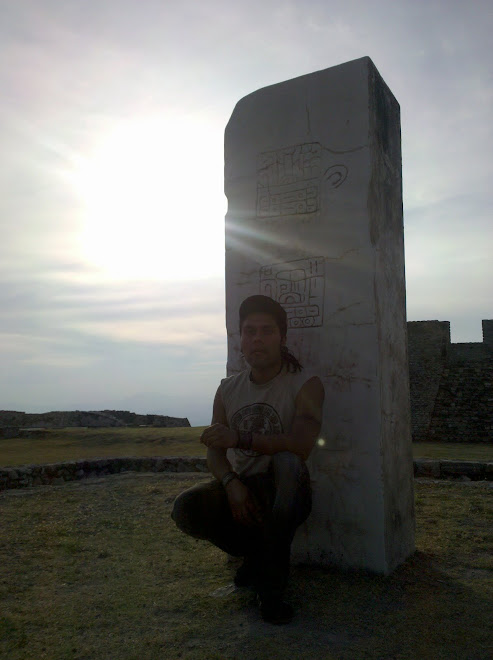



Teotihuacan means 'The City of the Gods", or "Where Men Become Gods"
(in Nahuatl). It is located in the valley of the same name 30 miles north of Mexico City.
Teotihuacan used to be a thriving city and ceremonial center that predated the Aztecs by several centuries. Most likely it was Mexico's biggest ancient city at its peak and the sixth largest city in the world in AD 600. Though archaeologists have long been fascinated with the site, Teotihuacan's culture and history are still largely mysterious. The civilization left massive ruins, but no trace has yet been found of a writing system and very little is known for sure about its inhabitants, who were succeeded first by the Toltecs and then by the Aztecs.
The Aztecs did not live in the city, but gave the place and its major structures their current names. They considered it the "Place of the Gods" - a place where, they believed, the current world was created.
the Sun Pyramid was the axis mundi for Teotihuacan culture, a space from which celestial and underworld levels were accessed symbolically.The Pyramid of the Sun, built in the 2nd century AD, dominates the landscape of the ancient city of Teotihuacan in Mexico.It is the third largest pyramid in the world and the largest in the Teotihuacan complex.
The Moon Pyramid is located at the northern end of the Avenue of the Dead, which is the main axis of the city. The pyramid, facing south, was built as the principal monument of the Moon Pyramid complex.
Besides the major ceremonial pyramids, there were also palaces and temples, especially near the north end of the city surrounding the plaza in front of the Pyramid of the Moon. These included the Palace of Quetzalcoatl, the Butterfly Palace, the Temple of the Feathered Conches, and the Palace of the Jaguars. The sophistication and artistry of the Teotihuacanos can be seen everywhere in the magnificent murals and stone carvings which adorn the walls of the palaces and apartment compounds.


whats in that pipe? ;)
ReplyDelete